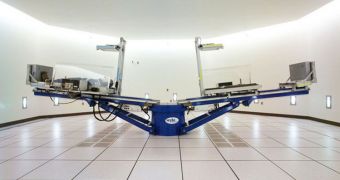Decades ago, the American space agency conducted a wide variety of tests aimed at benefiting its Moon-oriented program. Some of these investigations revolved around developing means of creating artificial gravity in space, so as to protect its astronauts from the harmful effects of being subjected to weightlessness for prolonged periods of time. In the mean time, these plans were abandoned, due to various difficulties, but now experts are looking into bringing them back to life, Space reports.
One of the main reasons for why this line of research now received renewed interest is the fact that the new direction that US President Barack Obama set for NASA in his 2011 budget proposal requires the agency to send astronauts to much more distant places, such as near-Earth objects and Mars. A trip to the Red Planet would take, on average, around 18 months, during which time astronauts would be subjected to weightlessness around the clock. They would experience some gravity once on Mars, but a much lower one than what the human body is accustomed to.
Debilitating loss of muscle and bone mass are some of the realest threats associated with long-term space missions. This is obvious in astronauts returning from long stays on the International Space Station. They need to undergo physiotherapy upon their return, until their bodies become strong enough to support their own weight. “You can try to treat each of the effects of weightlessness system by system, with certain pills for bone loss and certain exercise regimens for the muscles. Or you can treat the root cause of weightlessness by restoring gravity,” explains Massachusetts Institute of Technology (MIT) astronautics engineer Laurence Young.
Astronauts currently use a variety of equipments to exercise their bones and muscles, but adding a centrifuge could arguably eliminate the need for all of these workouts. The device would spin at a speed that would simulate the gravitational pull of Earth, thus forcing the astronaut's bodies to work as if they were back on Earth. This could prove extremely useful for long-term ISS residents, especially in light of the fact that the station's lifespan has just been prolonged. Future astronauts may therefore benefit from the joy of using such a centrifuge, as soon as sufficient funding is secured for research in this area to mature.

 14 DAY TRIAL //
14 DAY TRIAL //